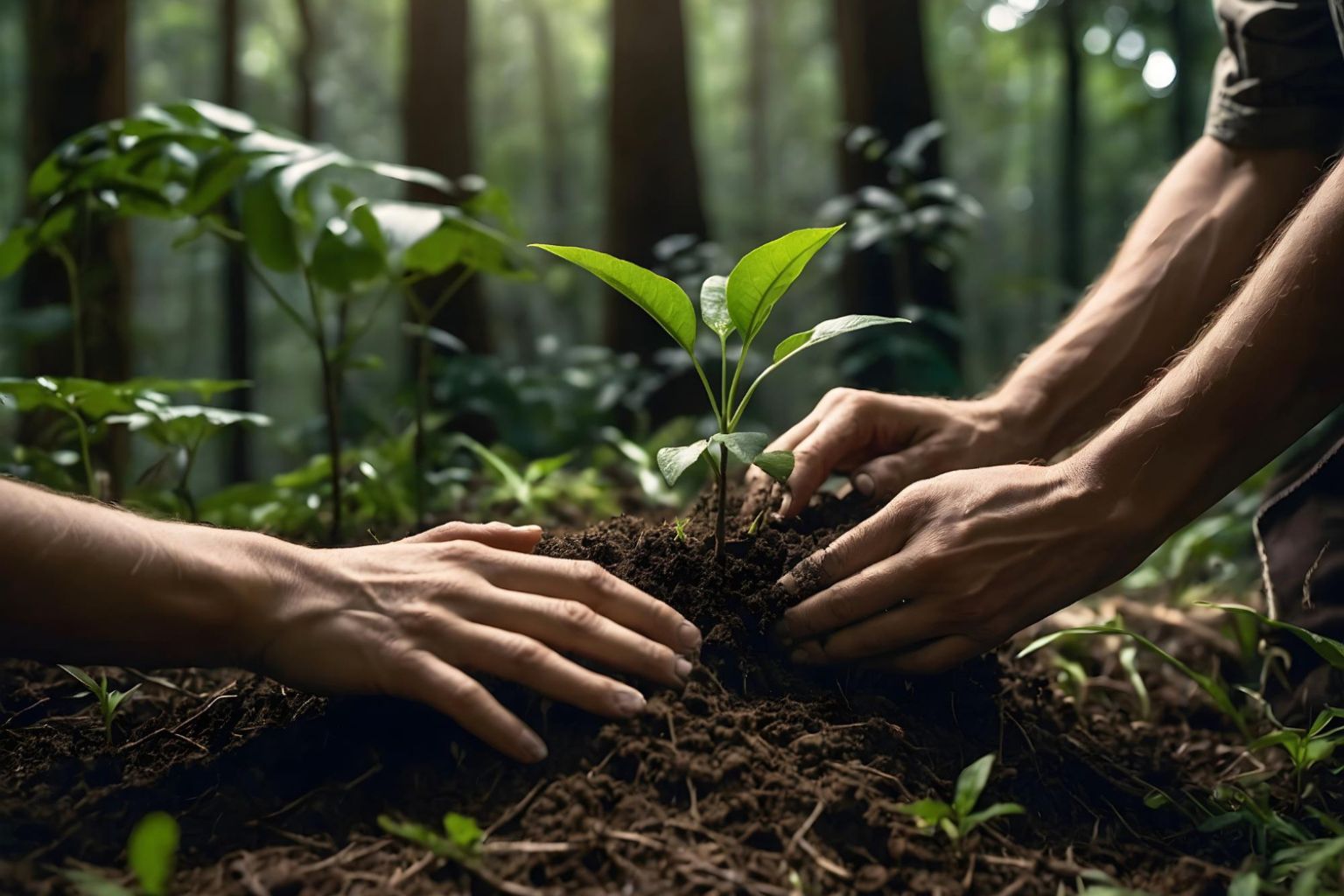Forest Conservation in Uttarakhand: Balancing Development and Preservation

Uttarakhand is known for its rich biodiversity and pristine forests. The forest of Uttarakhand acts as a lifeline of the place, regulating water supply, providing a natural habitat for both flora and fauna, protecting endangered species, and regulating soil fertility. Uttarakhand hosts many rare species of both animals and plants, which are protected by reserves and different sanctuaries. The most common plant species found in these forests of Uttarakhand are Pine, Deodar, Teak, Sal, oak, Shisham, and many other species of plants. These are present at different altitudes in the region. There are multiple projects currently running in the state for developmental purposes. The economic development of the state is linked with the utilization of natural resources in the state. It includes hydropower generation, mining for extracting minerals, and obtaining timber from forests. However, maintaining a balance between forest conservation and development in Uttarakhand is a major challenge.
Uttarakhand’s Astonishing rich biodiversity
The rich biodiversity of Uttarakhand is home to thousands of different species of plants and animals. Due to the climatic diversity and geography of the different areas, the forests of Uttarakhand are divided into four different categories. Some of the forests are present in the plain region of Terai to the hilly region of the Himalayas. Because of its rich biodiversity, 12% of the area is under government protection which includes a total of 7 wildlife sanctuaries, 6 different national Parks, a biosphere reserve and 7 forest conservation reserves.
Natural Resource extraction is expanding due to the rapid expansion of population and urbanisation. This leads to habitat loss, environmental degradation, and deforestation. It forms a cascade of effects including higher chances of landslides, floods, over utilisation of water resources which ultimately disrupt the ecological balance.
Different Forest Types in Uttarakhand
Geographically there are 4 different types of forests in Uttarakhand including Himadri Forest which is known to be present at higher elevations of about 3800 metres. Himadri forest is mainly found in the region of Almora district, Dehradun and Tehri Garhwal. Another important category of forest in Uttarakhand is tropical Pine. These are lush green forests, which consist of pine trees. They are mostly present at a height of 1000 metres. Moreover, these forests are mostly present in the Himalayan region. Pine trees are often seen in Almora and Raniketh. Next comes the tropical forests of Uttarakhand. These forests have plants which have commercial value such as Teak, Shisham, Sal, Mulberry and many others. Lastly, semi-temperate forests of the Himalayan region are present at a height of 1600 – 2900 meters. These contain evergreen plants with needle-shaped pointed leaves. For example, Deodar is also known as the gold wood of the forest due to its strong strength and durability.
Forest conservation movement
Historically, there have been many forest conservation movements in Uttarakhand to protect the forests. Some of the most famous cases include:
- Chipko movement: This was the first and the most famous movement for protecting the forests of Uttarakhand from illegal exploitation and reckless use of trees. It was started by Gaura Devi in the year 1973 in the Gopeshwar region. Many women in this area united together against the Indian government to protect the felling of trees. In this, they gather together to hug trees to stop them from falling. In this movement, two environmentalists Chandi Prasad Bhatt and Sunder Lal Bahuguna played an important role because of their efforts they were presented with Magsasay Award by the government.
- Maiti movement: It was started back in the year 1995 by women of Uttarakhand living in the Garhwal region to spread awareness about the protection of the environment. Under this movement, afforestation at a large scale was performed. This was highly recognised by Flora Donald, Former prime Minister of Canada. Later on, this movement was introduced to other countries also including the US and UK.
- Pani rakho movement: It was started in the village of Pauri Garhwal by young people from Ufraikhal village. The main outcome of this movement was to establish afforestation in barren fields in the Pauri Garhwal region of Uttarakhand. Under this movement, more than 15 lakhs of plants were planted in the barren fields of the village. Due to this now the region has more dense forest and it is filled with natural resources like water which is available throughout the year.
These are a few of the most important movements held in the history of Uttarakhand for the conservation of forests and biodiversity.
Deforestation rate of Uttarakhand
Uttarakhand has witnessed deforestation at a very rapid rate because of rapid urbanisation and increasing commercial activities. As per the reports by the Forest Department of Uttarakhand, the rate of deforestation in Uttarakhand is so high that the state which earlier had 2/3 of its geographical area, covered with rich and dense forest has now lost more than 50,000 hectares of forest cover because of various industrial activities happening between the year 2000 to 2020. That means in the last 20 years due to the rapid expansion of industries in Uttarakhand it has lost 50K hectares of forest. The commercial activities which are responsible for this loss are mainly the establishment of hydropower plants, mining for extraction of minerals, distribution lines, road construction and water pipelines. Many studies have revealed that the main cause of deforestation is mining activities because of which almost 8,760 hectares of forest cover have been lost which is followed by power distribution lines construction which resulted in the loss of land of about 2,332 hectares and hydropower projects (2,295 hectares). Apart from this, more than 20K hectares of land were lost due to activities such as defence, Railways, building construction, optical fibres, rehabilitation and construction of houses. Out of all the cities, Dehradun has witnessed a significant amount of loss of forest of around 21,303 hectares which is followed by other major areas such as Haridwar, Chamoli, Tehri and Pithoragarh.
Consequences of deforestation
Deforestation in Uttarakhand has both long-term and short-term effects. Apart from the loss of many species of plants and animals, climate change and carbon emissions, deforestation can lead to disruption in ecological function. It can result in increased natural calamities mainly floods. Apart from this forest cover loss can also cause irregular rainfall and soil erosion in certain areas. It mainly affects the local people and nearby communities. The long-term effect of such losses includes complete collapse and disruption of the ecosystem. In extreme circumstances, such a collapse of the environment can result in the movement of people from their main place of residence to other places. Such types of people are known as environmental refugees.
How does forest restoration help in combatting deforestation?
The Himalayan region of Uttarakhand which is known for supporting a large variety and species of plants and animals has witnessed major incidents of soil erosion and landslides due to the degradation of forest. It has resulted in major damage to the Agro-economy of the region. The introduction of forest conservation plans, afforestation programs and a decrease in commercial usage of forest land can help to mitigate such problems. Due to various funding and capacity-building strategies, the government and private companies are adopting sustainable practices. Moreover, plantation drive in many regions of Uttarakhand has also been increased to overcome challenges due to the loss of forest. Moreover, the Forest Restoration Program run by the government aims to restore mass-scale forest land by regeneration and plantation in mountain regions of the state. To expand forest in Uttarakhand the government has distributed the land into Van Panchayats, Private Lands, and Village Lands. The Private land contains barren land and terraces. On the other hand, Van Panchayats consist of wastelands and lastly Village land consists of degraded and deforested areas. In this way, different solutions will be implemented to increase green cover of the areas.
How to achieve sustainable development?
There are various practices that can be done to protect the forest from getting destroyed and completely vanished. This includes:
Eco-tourism: Increasing Tourism in Uttarakhand is one of the major causes of loss of forest. The government can promote eco-tourism in the state which will reduce environmental impact. This will help to promote awareness about the need for afforestation while generating revenue.
Sustainable forest management practices: Promoting plantation drives, implementing a specific logging technique and using non-timber-based products, can help to protect the forest while maintaining ecological balance.
Investing in the use of renewable sources of energy: Instead of using natural resources, people can use alternative sources of energy that are renewable such as wind and solar energy. This will reduce the dependency on consuming natural resources and reduce the number of hydropower projects. Moreover, the government can make strict rules and policies to prevent illegal logging and encroachment of forests.
Road Ahead
Maintaining a balance between forest preservation and development requires multi-pronged strategies. The use of sustainable practices community participation and plantation drives in different regions of the state help to thrive forest while also flourishing the economy of the state. If the government and people work together they can safeguard the ecological and cultural heritage of the state while developing a sustainable future.
